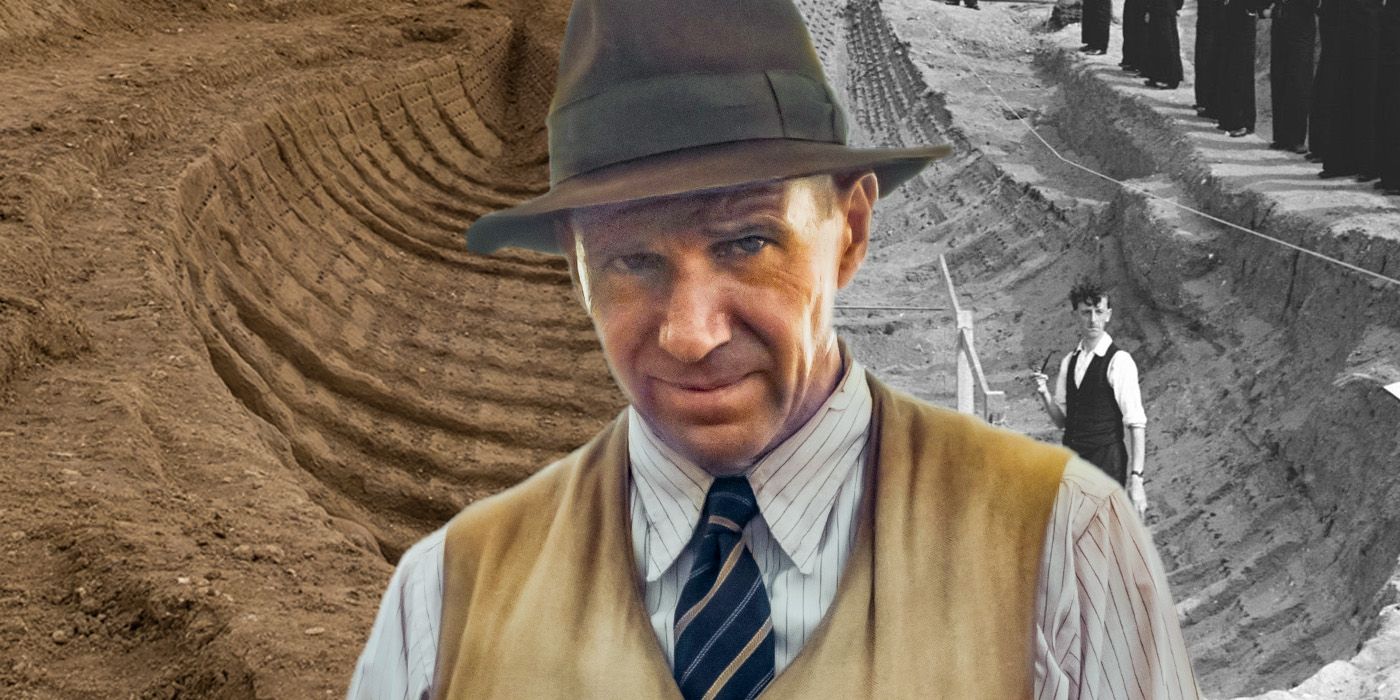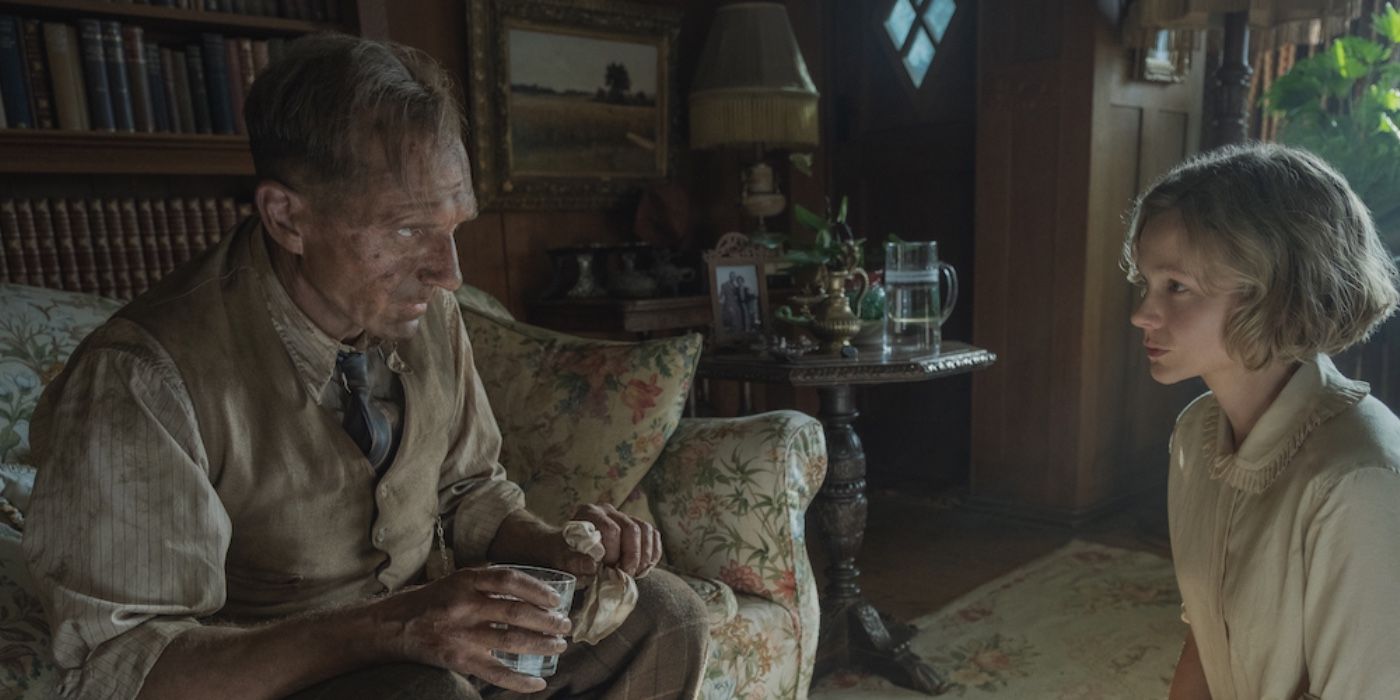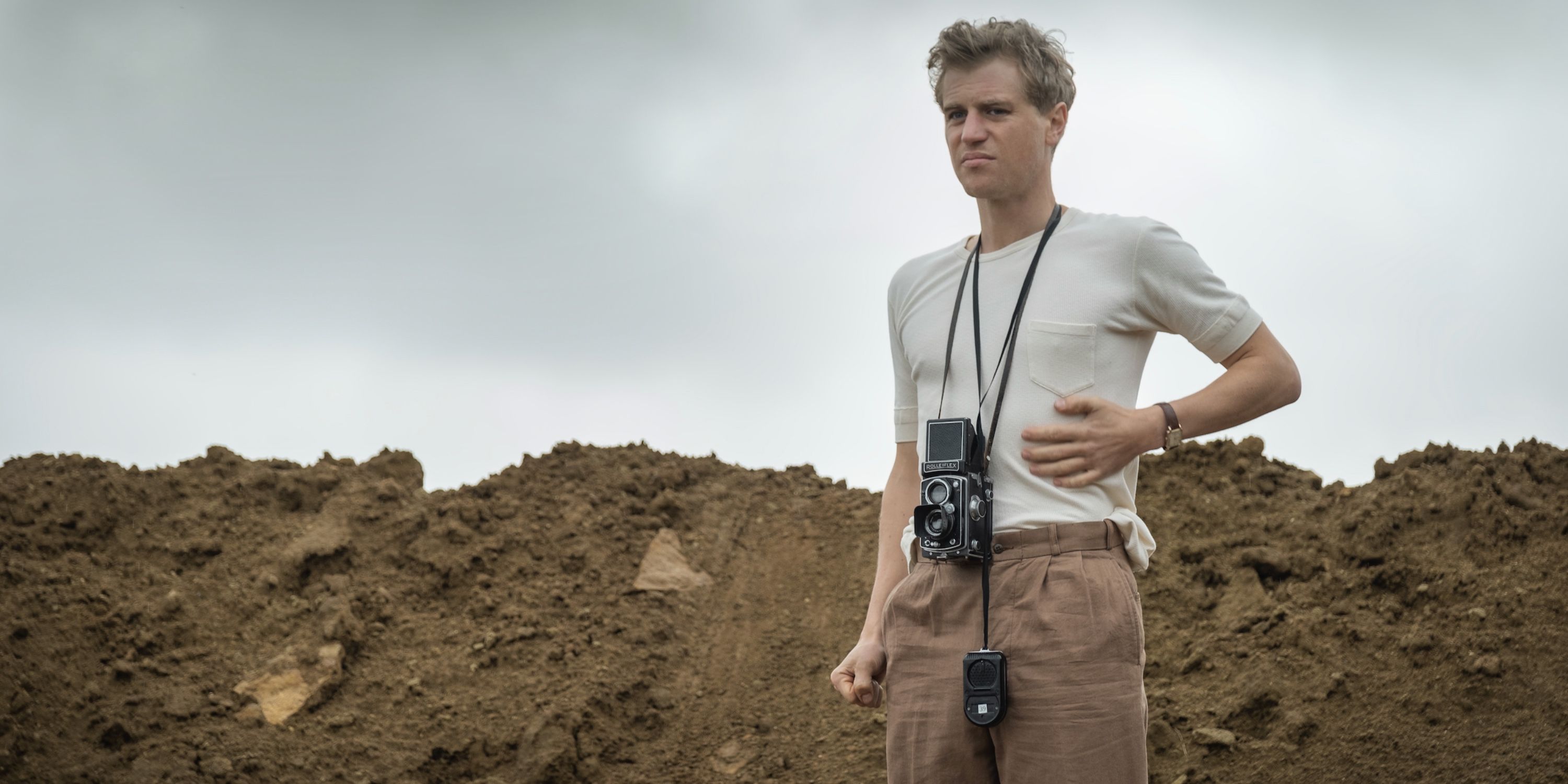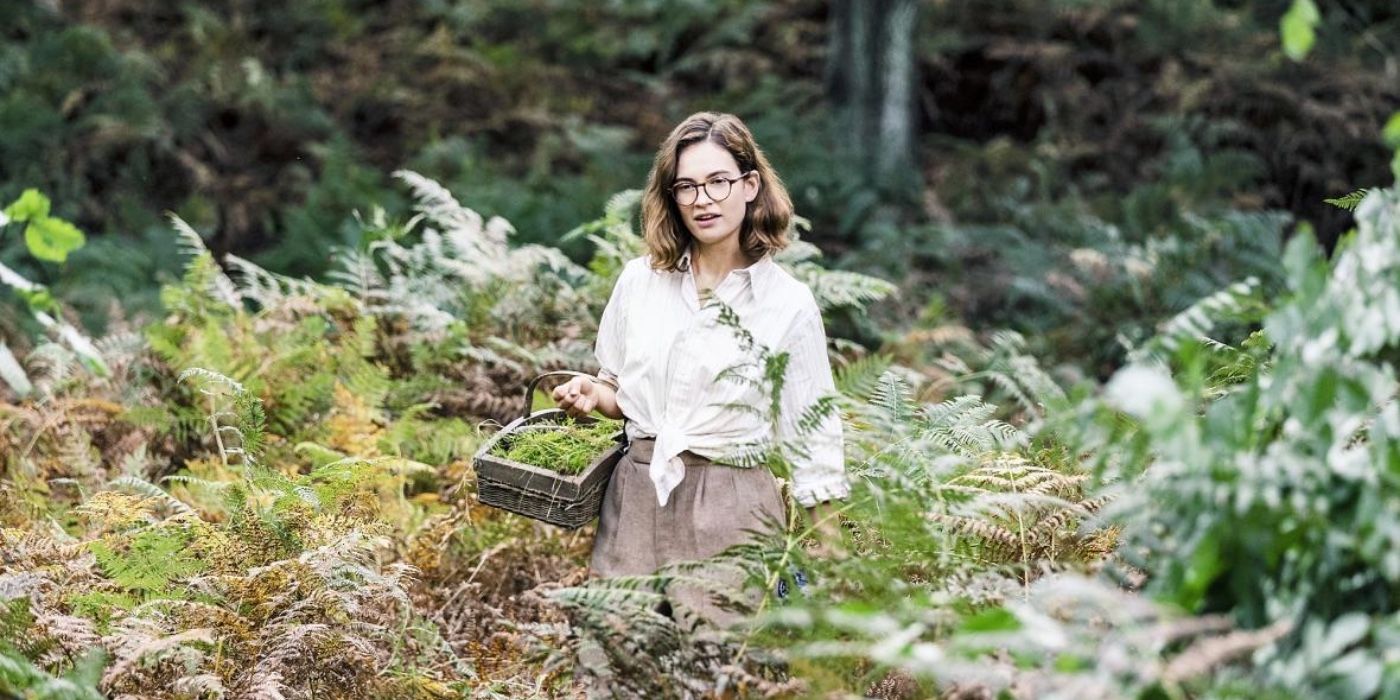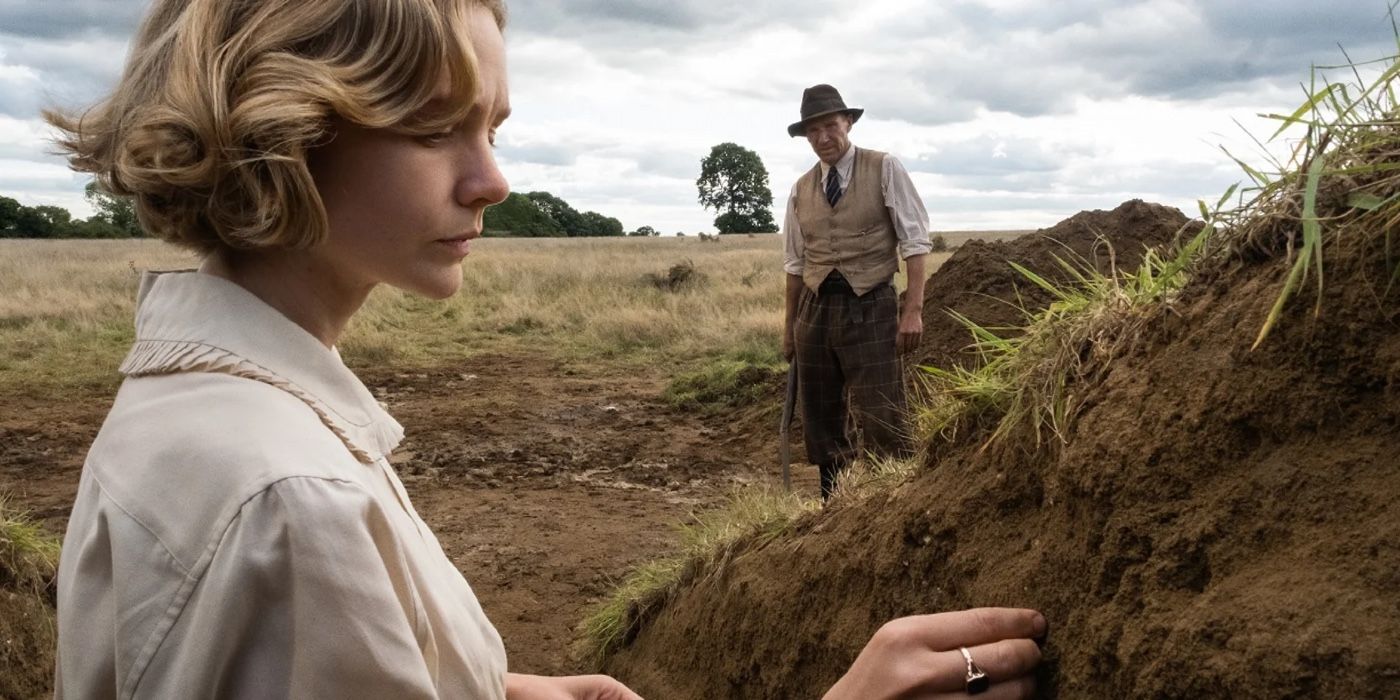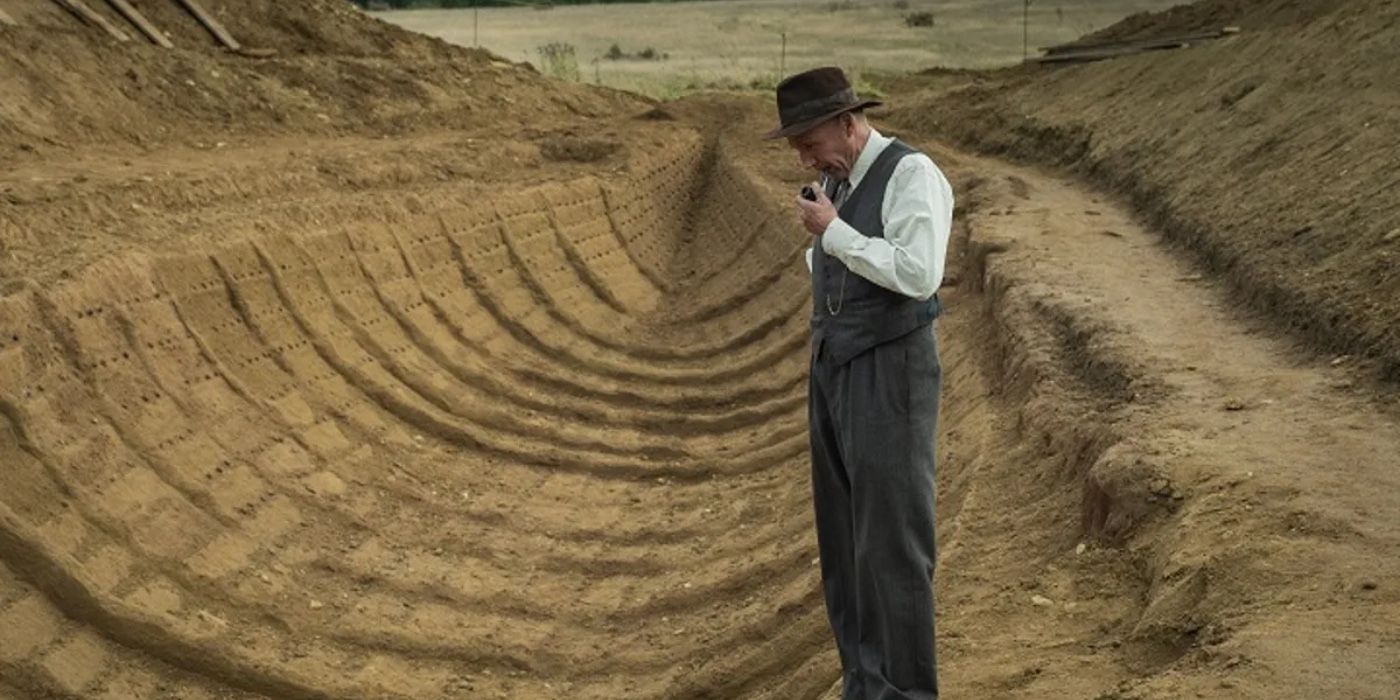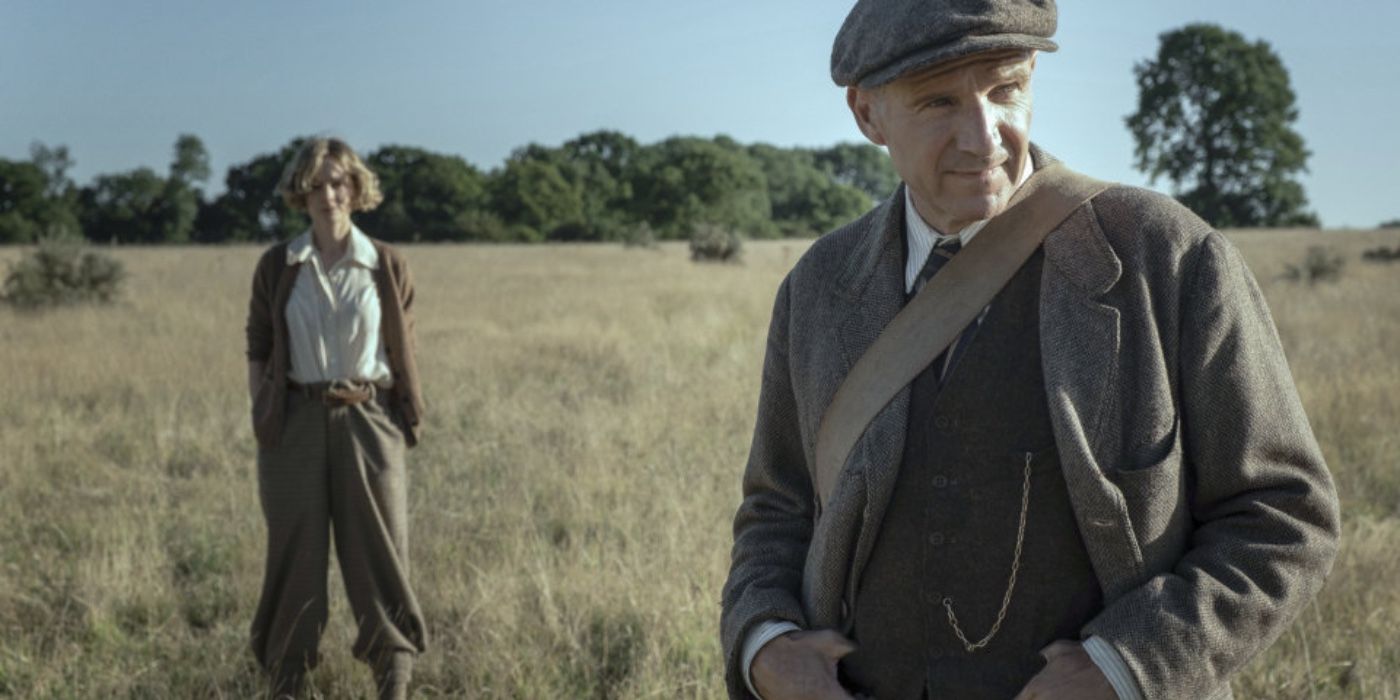Netflix’s The Dig is based on the true story of the 1939 archaeological excavation at Sutton Hoo, but not everything in the movie is pulled from history; some has been changed. The excavation unearthed the monumental find of an ancient Anglo-Saxon ship burial, and The Dig tells the story of the people behind the discovery of the priceless historical artifacts in Suffolk, England. Based on a novel of the same name by John Preston, the movie dramatizes the events of the first major dig at the Sutton Hoo site.
The movie sticks to the truth with the foundations of the story, and most of the characters in The Dig movie are based on real people involved in the excavation. In 1939, Edith Pretty (played in the movie by Carey Mulligan) hired self-taught archaeologist Basil Brown (Ralph Fiennes) to excavate the burial mounds on her land. He unearthed a find no one expected, an intact 6th-century ship burial that redefined historical knowledge of the Anglo-Saxons. As word of the find spread, Charles Phillips (Ken Stott) and his team of archaeologists took over the excavation under the urgency of the looming threat of World War II.
The real-life find at Sutton Hoo was just as staggering as it appears in The Dig and attracted just as much attention from museums, archaeologists, and journalists. The ultimate fates of the characters in The Dig’s bittersweet ending are also largely unaltered. Although the courts decided the treasure belonged to Edith Pretty, she gifted the discovery to the British Museum before dying three years later, and Basil Brown remained unacknowledged in the Sutton Hoo discovery until recently. However, beyond the basics, The Dig takes creative license with the facts.
Many of the dramatic occurrences and conflicts in the film are fabrications, and certain characters are entirely fictional. Archaeology is mostly a methodical and laborious process, so the real events are spiced up with a few instances of peril, and dynamics between the characters are exaggerated for conflict. Though The Dig sheds light upon a lesser-known but important moment in history, it also changes quite a bit about the real Sutton Hoo excavation and the people involved.
Basil Brown Wasn’t Buried In A Mound Collapse
Although Basil Brown is based on a real person, not everything that happened to him in the movie occurred during the real excavation. In The Dig, Brown is buried under a mound’s collapsing dirt walls early in the excavation, but this never actually happened. While wall collapses are a concern archaeologists must contend with, there’s no record that one happened at Sutton Hoo. The closest call at Sutton Hoo was worry over whether the viewing platform might collapse because of the sandy soil.
Photographer Rory Lomax Is Fictional
In the film, Edith Pretty brings in her cousin, Rory Lomax (Johnny Flynn), to assist at the site and take photographs of the excavation. He becomes involved in a romance with married archaeologist Peggy Piggott (Lily James) before he is called up by the Royal Air Force and departs for World War II. Not only is the romance entirely fake, but Rory Lomax never existed.
The Sutton Hoo excavation was extensively photographed by Mercie Lack and Barbara Wagstaff, who are replaced by Lomax in the dramatization. Peggy Piggott and her husband did eventually divorce, but not for another 17 years after the Sutton Hoo excavation. There’s no indication that her marriage fell apart while she was working at the site, whether over a handsome photographer or otherwise.
Peggy Piggott Was An Experienced Archaeologist
The Dig’s Peggy Piggott is presented as an amateur only getting her start in archaeology at the side of her husband. In fact, by 1939, Peggy Piggott was an experienced archaeologist. In the movie, Piggott says she has not done much fieldwork, but the real archaeologist had already directed an excavation in 1937 in addition to extensive fieldwork. Like many women of the era, her contributions have been ignored (similar to The Alienist's Sara Howard based on Isabella Goodwin), and The Dig unfortunately does little to shed light on her illustrious archaeological career.
A Warplane Didn’t Crash Nearby During the Excavation
As Edith Pretty and the excavation team prepared to celebrate their success in the movie, a warplane crashed into the water nearby, a fatal accident in which they had to recover the body of the pilot. There is also no record of this happening during the excavation. During a celebratory party, Charles Phillips’ speech about the ship burial was drowned out by a warplane flying over, but there was no crash at the time. There was a plane crash in the River Deben near Sutton Hoo, but this did not happen until late in World War II. These two instances may have been combined for dramatic effect, making significant changes to the timeline of the true story.
The Real Dig Took Longer
Archaeology does not usually happen quickly, and the movie compressed the timeline to make it seem like the entire dig happened in a single season. Basil Brown actually started work at Sutton Hoo in 1938 and found some small but significant artifacts, such as ship rivets, that hinted at the treasure at the site. The movie has Brown starting work in 1939, when in real life he returned for his second season at Sutton Hoo that year. His work at the site’s other mounds was also more extensive than the movie shows, but his methodical excavation over two years was compressed to help the story flow better.
There Was Not As Much Conflict Between Brown and Phillips
Many adaptations of true stories exaggerate conflicts between characters (just look at Mank's handling of Herman Mankiewicz and Citizen Kane), and the animosity between Basil Brown and Charles Phillips is no exception. There is some basis in fact, however. Brown was relegated to assisting on the dig after Phillips arrived, and his name was left out the exhibit of the Sutton Hoo artifacts. According to Brown’s writings, he did fight with Phillips on occasion, but they also had a respect for each other, and Phillips praised Brown’s skill in his accounts of the dig. While The Dig takes a lot of dramatic license with the events of the Sutton Hoo excavation, it also sheds a rare light on a significant discovery and the people who made it.

